Multiplication with soroban
In order to perform multiplication operations with the soroban, you must have learned the multiplication tables.
Here is a link where you can easily revise the multiplication tables : Multiplication tables
I would also like to point out that you must have worked on the chapter on addition with the soroban: Addition with the soroban
Multiplication by a single digit
For example, let's take the operation :
726 x 4
As with the usual method of multiplication, we will successively multiply the number 4 by each of the numbers 6, 2 and 7.
So let's multiply 4 by 6:
4 x 6 = 24
This number should be written on the soroban, starting with the units column. That is, write 4 in the units column and 2 in the tens column.
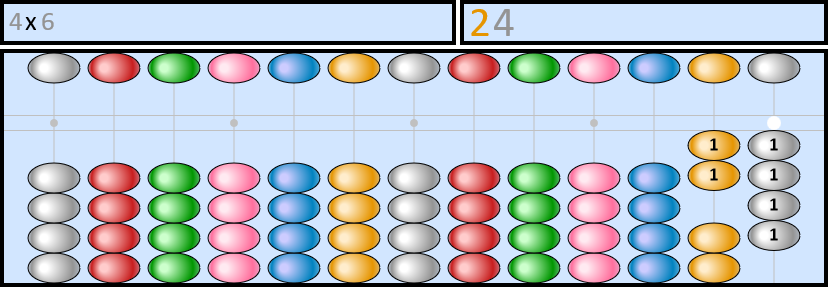
Then multiply 4 by 2 :
4 x 2 = 8
The number 8 should be added to the soroban in the tens column.
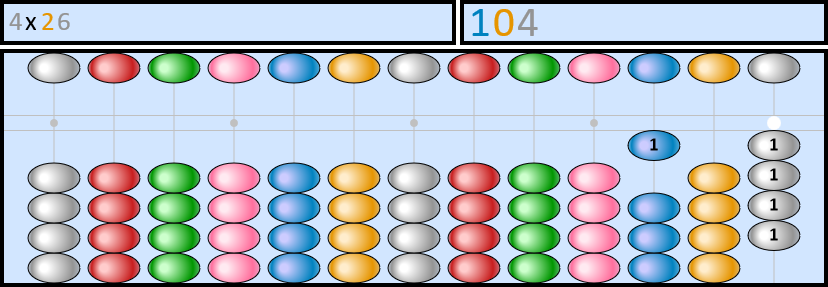
Then multiply 4 by 7 :
4 x 7 = 28
The number 28 should be added to the soroban starting at the hundreds column.
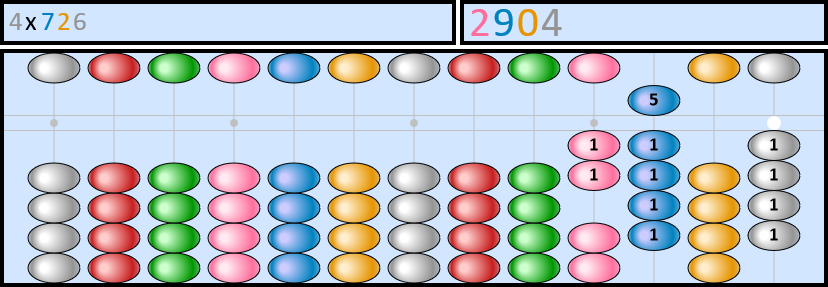
You then read the result of the multiplication which is 2904 :
726 x 4 = 2904
13rd exercise
In this exercise you will have a sequence of single digit multiplication operations to perform on the virtual soroban.
Click on the following button to start:
Case of multiplication by a multi-digit number
For example, consider the operation :
384 x 57
Once again, I proceed in a similar way to the usual method of multiplication, i.e. I have to multiply the numbers in a crosswise manner:
- Successively multiply the number 7 by each of the numbers 4, 8 and then 3
- Multiply the number 5 successively by each of the numbers 4, 8 and then 3.
- Each time add the result, immediately writing down the carry.
So let's multiply 7 times 4 :
7 x 4 = 28
Write this number on the soroban, starting from the units column. That is, write 8 in the units column and 2 in the tens column.
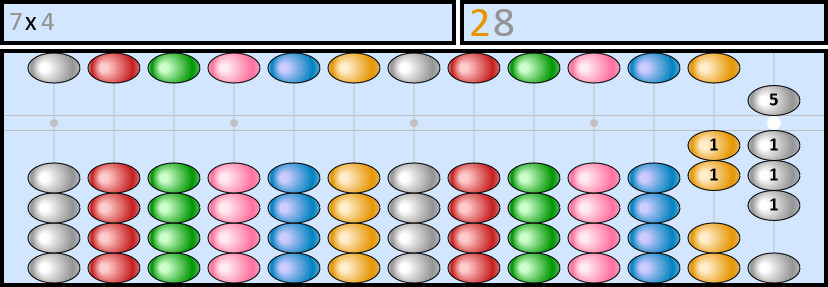
Then multiply 7 times 8 :
7 x 8 = 56
The number 56 should be added to the soroban starting at the tens column.
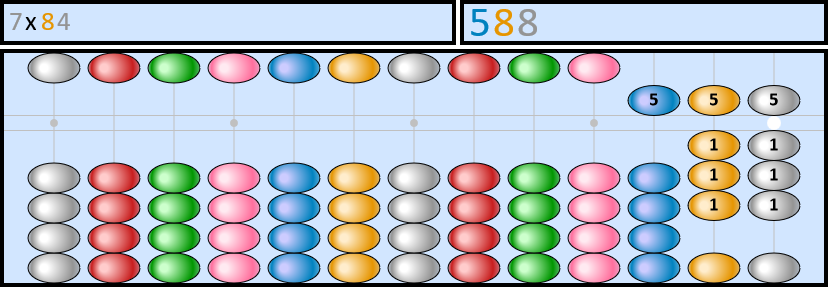
Then multiply 7 times 3 :
7 x 3 = 21
The number 21 should be added to the soroban starting at the hundreds column.

Now we are going to start multiplying the number 5 by the numbers 4, 8 and 3. Remember that we have to start writing the results from the tens column. This is because, as with the usual multiplication technique,
- when multiplying by the tens digit of the 2nd factor, we leave a blank space (or mark a dot) and start the multiplication from the tens column
- when multiplying by the hundreds digit of the 2nd factor, we leave two cells empty (or mark two dots) and start the multiplication from the hundreds column
- and so on.
Let's multiply 5 times 4:
5 x 4 = 20
The number 20 should be added to the soroban starting at the tens column.
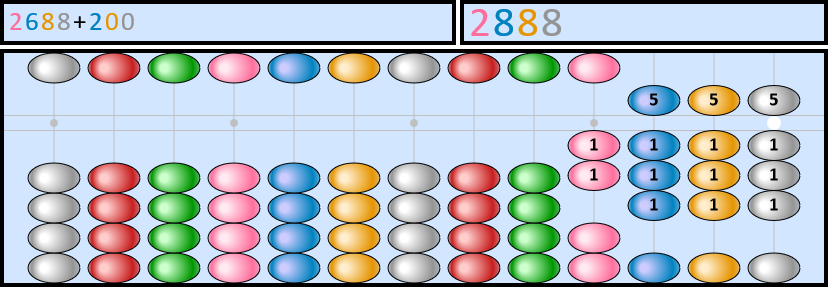
Then multiply 5 times 8 :
5 x 8 = 40
The number 40 should be added to the soroban starting at the hundreds column.
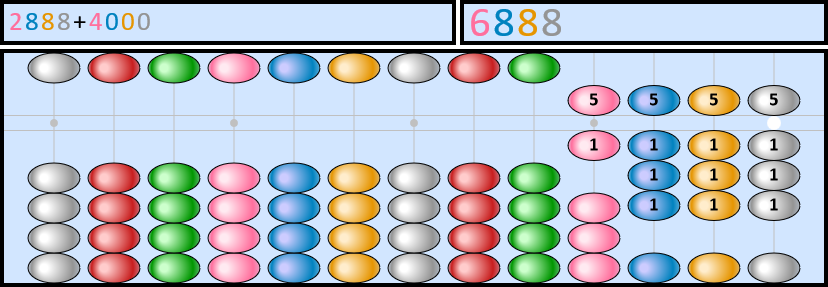
Then multiply 5 times 3 :
5 x 3 = 15
The number 15 should be added to the soroban starting at the thousands column.

Now that you have done all the multiplications of the digits of the factors of the operation crosswise, then what is represented in the soroban is the result of the multiplication:
384 x 57 = 21888
14rd exercise
In this exercise you will have a sequence of multiplying operations by a multi-digit number to perform on the virtual soroban.
Click on the following button to start: